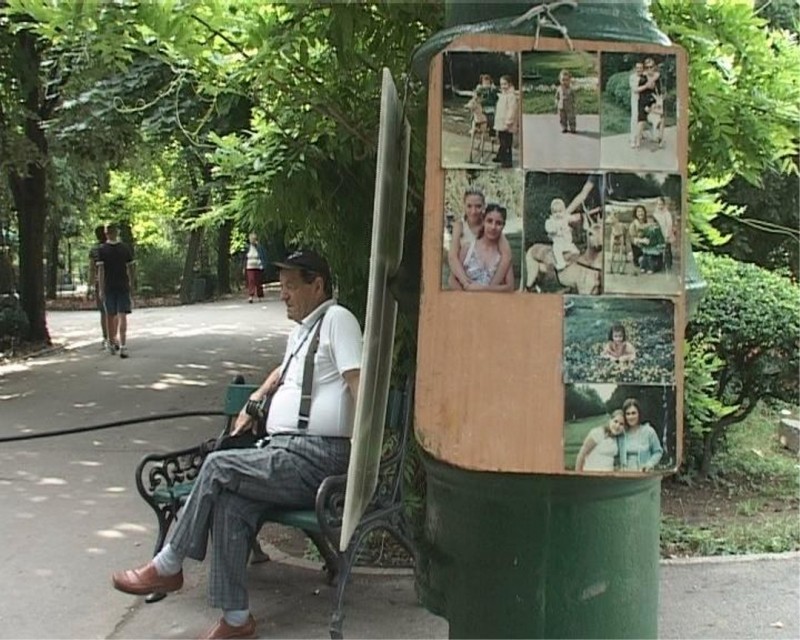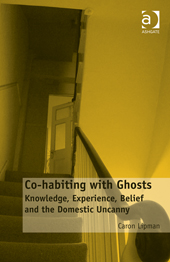In the two years that have passed since the broadcast of the ITV documentary Exposure: The Other Side of Jimmy in October 2012 the impact of the posthumous revelations about the scale and depravity of Jimmy Savile’s crimes, which precipitated the launch of the police investigation Operation Yewtree, has been far-reaching. At the beginning of December, Ray Teret, a DJ and long-standing friend of Savile was the latest public figure to be found guilty of sexual abuse allegations that stretched back decades. And just this week yet another former Radio 1 DJ, Chris Denning, was convicted of the sexual abuse of young boys in the 1960s, 70s and 80s. Other household names that have similarly fallen precipitously from grace include musician and entertainer Rolf Harris, DJ Dave Lee Travis, radio and television presenter Stuart Hall, and the public relations advisor Max Clifford. That the likes of Savile, Harris, Hall and, to a lesser extent, Travis have at various times all been prominent fixtures in British popular culture has meant that their ‘legacy’ as entertainers and celebrities – for decades so indelibly entwined with the BBC and its broadcasting heritage – now casts a much darker shadow; a legacy that is no less part of this putative ‘heritage’, however much audiences may now wish to erase it from the nation’s collective memory banks.
In August the near fever-pitch excitement that greeted Kate Bush’s first live performances since 1979 was marred only by the realisation that Rolf Harris’s contribution to Bush’s 2005 album Aerial (and 1982’s The Dreaming) might now be seen in a different and altogether less palatable light (Harris was convicted in June for a series of indecent assaults). If programming one’s CD player or iPod to skip (or delete) the offending tracks offers one way of ‘wiping’ a now despoiled musical legacy, then it is a formula similar to that which TV programmers and archivists have found themselves increasingly having to adopt. Such are the expectations placed upon broadcasters to ensure that all archival traces of Savile and his ilk remain buried in the vaults (outside, that is, of the discursive context of their shaming), that when an otherwise innocuous item slips through (as with the impersonation of Savile that appeared in a repeated episode of the children’s television programme The Tweenies) it is almost as if BBC heads are expected to roll.
In its capacity as curator of Britain’s televised popular music heritage, the BBC’s reliance on a seemingly inexhaustible supply of archival footage to draw on for inexpensive nostalgia programming content has, post-Savile, been severely tested. From 2011, BBC4 started repeating weekly episodes of the long-running BBC chart show Top of the Pops originally aired in 1976. The brief was relatively straightforward: the repeats would mirror those transmitted twenty-five years earlier with episodes shown in succession on a week-by-week basis. However, the appearance of regular hosts Savile and Travis, or disgraced 1970s pop star Gary Glitter (who has convictions for child sexual abuse and possession of child pornography) has resulted in certain episodes having to be omitted. In the wake of the Savile scandal in 2012 the then BBC4 controller Richard Klein considered axing the classic re-runs from the 1970s, but in response to reportedly ‘overwhelming’ public demand he decided to maintain the repeats ‘for the foreseeable future’. The more pragmatic calculation that, on balance, there was still a sufficient amount of unsullied archival material to draw on no doubt also informed Klein’s decision: ‘Looking at it, we decided we will not be showing either the DLT or Jimmy Savile fronted shows but that left us plenty of Top of the Pops to show’.
Not that any of this can, of course, be confined just to Top of the Pops. Indeed, an episode of Savile’s own Clunk Click programme from the 1970s, featuring Savile and Gary Glitter ‘helping themselves’ to a group of girls from the studio audience, makes for particularly disturbing viewing. But just as the Savile scandal and others like it bring the wider culture, customs and practices of the BBC as an institution into the frame of discussion and debate, so too does consideration of these otherwise ‘aberrant’ or isolated cases throw a critical spotlight across the wider broadcasting landscape and culture of the 1960s and 70s. As much as it is easy or desirable to heap the pathological dysfunction squarely on the perpetrators themselves, there is nevertheless a broader societal context that has bearing on questions of why or how such actions were able to be perpetrated at such a scale over such long periods (especially in view of the fact that, as many testimonies have since demonstrated, there was considerable rumour and suspicion about what was going on as far back, in the case of Savile, as the 1960s).
If framed just in terms of ‘the 1970s’, there has emerged, post-Savile, a sense that the decade itself can or perhaps should be held to account in order to fully expunge certain values, cultural norms and attitudes which ‘we’ (i.e. hose who inhabit the 2010s) now recognise as completely and utterly abhorrent. Such temporal ‘othering’, while on the one hand functioning to demarcate a clear line of acceptability and unacceptability, on the other carries with it the risk of complacency insofar as what has been morally consigned to an earlier era is deemed to be something from which the 2010s have become in some way immune. A barometer by which these shifts in attitudes towards a more ambivalent sense of a popular cultural past can be measured (at least in part) is that of ‘nostalgia’.
Nostalgia shows have become a staple of television programme schedules, not least for the appeal they offer to broadcasters looking to plunder the archive for cheap recyclable content (and for whom ‘the past’ is an inexhaustible commodity that just keeps on giving). Programmes such as BBC’s I Love the 70s (or their 1980s or 90s variants) have since the early 2000s traded on a reflective nostalgia that music journalist Simon Reynolds has dubbed ‘retromania’. Despite its adherence to the same formulaic narrative style (consisting of celebrity ‘talking heads’ commenting on items or programme clips the producers had pre-selected), a marked departure from the genre was the recent Channel Four two-part documentary It Was Alright in the 1970s¸ broadcast in November 2014. The playful and irreverent take on all things ‘retro’ that was evident in I Love the 1970s gives way, in It Was Alright in the 1970s to an examination of the social and cultural mores of decade now seen through the prism of Savile and Operation Yewtree. Whereas in the earlier nostalgia shows questions of taste were typically pitched on aesthetic and kitsch terms, in this more recent example what is considered ‘distasteful’ relates more to prevailing attitudes of sexism, homophobia and racism. Participants are shown responding to footage taken from a range of 1970s television programmes (The Black and White Mistrels Show, Benny Hill, and Casanova ’73, to name but a few), their reactions typically ranging from jaw-dropping disbelief, to stunned silence or comic outrage. Despite the title, and overshadowed by the legacy of Savile, the shift in tone that is evident in the programme seems to stem from the realisation that things were clearly far from alright in the 1970s and that, with more prosecutions still to come and the reputation (and potential complicity) of the BBC under forensic scrutiny (the Dame Janet Smith Review is due in early 2015), the extent to which it wasn’t so has yet to fully unravel.
As well as the convictions of Teret and Denning that have been in the news ver the last couple of weeks, these issues have lurched their way back into my thoughts of late partly through the process of preparing a lecture called ‘Retromania! Popular Culture and Nostalgia’ as part of the new third year module Mediating the Past I am teaching. However unpalatable the subject matter, the issues raised nevertheless touch on debates surrounding the flip side of cultural memory – namely ‘erasure’ and the cultural politics of forgetting – and also the way in which a critical focus on nostalgia can shed valuable insights into the ambivalent relationships that bind present and past popular mediascapes.
Another factor that has prompted the reflections that have developed into this blog entry is the recent publication of the edited collection Sites of Popular Music Heritage (Routledge, 2014), which I co-edited with Sara Cohen and Marion Leonard from the School of Music, and Rob Knifton, formerly a postdoctoral researcher in the School of Music and now based at Kingston University. In the book, Sara and I contribute a chapter called ‘Unveiling Memory: Blue Plaques as In/tangible Markers of Popular Music Heritage’ that briefly discusses the Savile case, albeit in the context of material markers of heritage and memory. As with the process of ‘unmarking’ or erasing memory in the digital domain, the removal of
heritage plaques becomes a deeply symbolic gesture in itself. In the case of Savile, a plaque that had been erected at his former home in North Yorkshire by Scarborough Civic Society was removed by the local authorities who also stripped Savile of all other honours that had been bestowed on him over the years. This official gesture followed on from the display of more ‘unofficial’ gestures in the form of graffiti that had been daubed on the memorial plaque. Alongside the words ‘philanthropist and entertainer lived here’ had been added ‘paedophile’ and ‘rapist’. In addition to this, and to complete the official dishonouring of the former television star, Savile’s ostentatious headstone was removed and dumped in a skip to be used as landfill, leaving the body lying in an unmarked grave.
Lastly, Savile reared his ugly head once more recently when revisiting the Merseybeat-era film Ferry Cross the Mersey (Jeremy Summers, 1965), in which he appears in a lengthy scene shot in the Locarno Ballroom (now The Liverpool Olympia). The film has been little seen since its 1960s release (nor has it been officially released on video or DVD) and in this respect the appearance of Savile will have no doubt sealed its fate for good. That said, despite or because of this I would be interested to gauge what local public reaction to the film is or would be, if for no other reason that it is one of the few Liverpool feature films made in the 1960s and as such is an important part of the city’s filmic (and Merseybeat) heritage, irrespective of any cinematic or aesthetic merits (it has few) or its corrosive association with Savile. While the temptation to bury the film for good or edit out the scenes involving Savile is certainly a valid and persuasive option, a more honest and appropriate response would be to recognise it as a part of a legacy or heritage that, warts and all, is what it is. In this respect – and if, as I hope, a public screening can be organised – the film might provide a focus of discussion that productively explores the role of nostalgia and cultural memory – in all its facets and forms – in shaping narratives of a city’s popular cultural past and the ways these are refracted through the mediascapes of the present.
Les Roberts


 How does it feel to
How does it feel to


